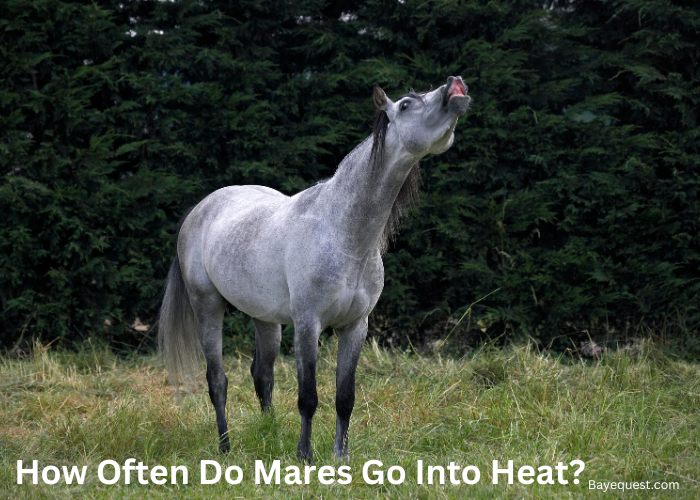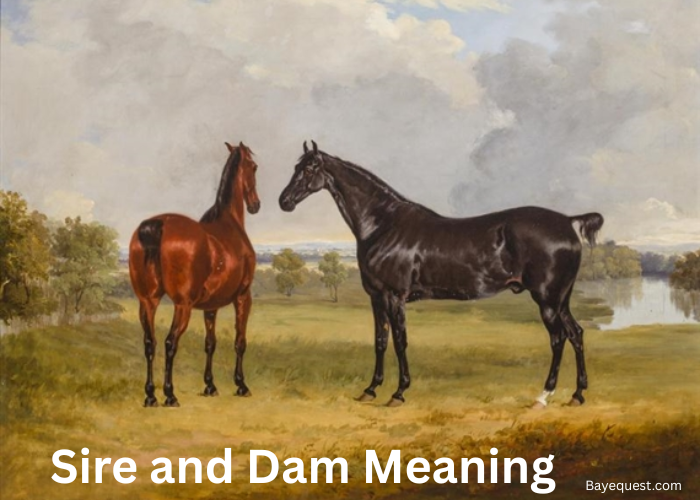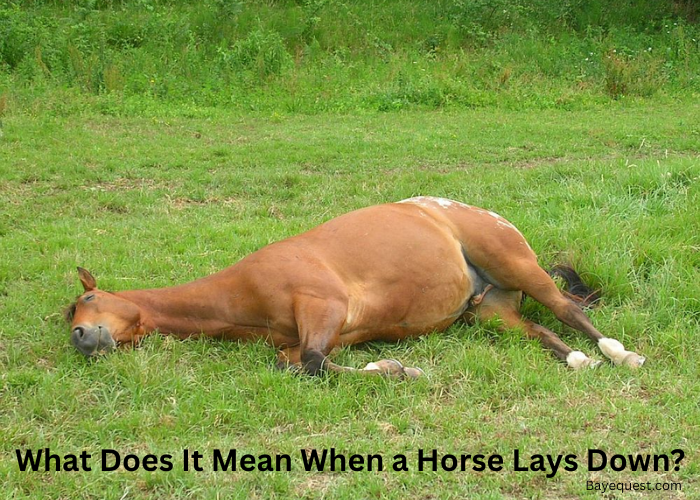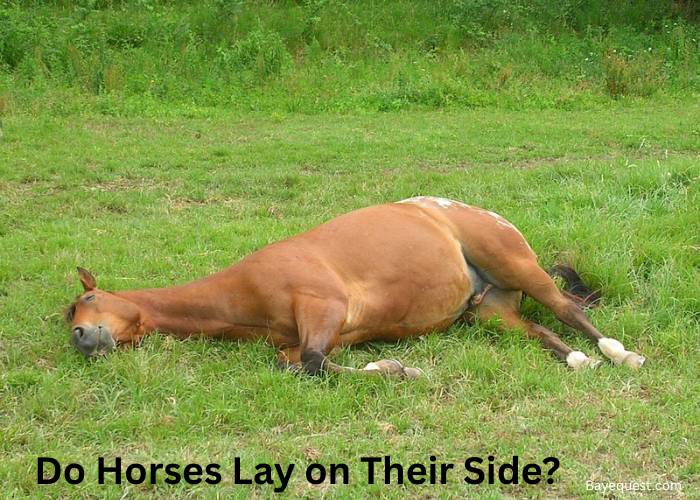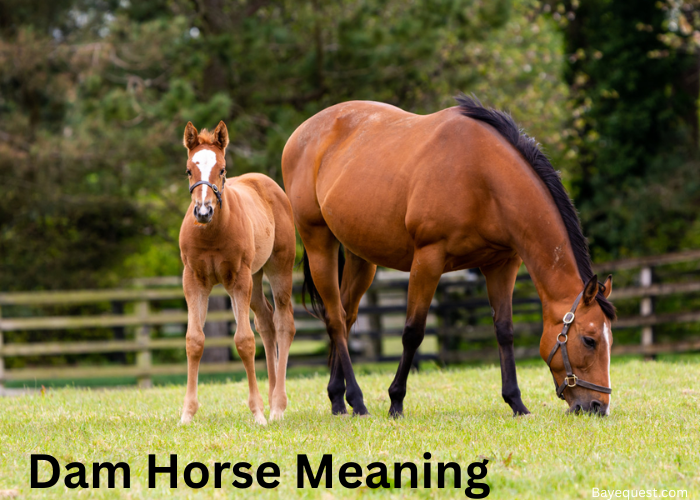How often does your mare go into heat? That’s a question many horse owners ask.
Understanding the estrous cycle of a mare can make a big difference. Knowing the timing helps you prepare for her behavior and manage her care more effectively.
Mares go into heat every three weeks, but there’s more to it than just the timing.
This guide explains the details in simple terms, helping you anticipate and handle each phase with ease.
Get ready to explore the intriguing world of mare cycles and make horse care a smoother experience.
How Often Do Mares Go Into Heat? Key Takeaway
Mares go into heat every 21 days during the breeding season, which lasts from early spring to late summer. Each estrus cycle, when the mare is receptive to breeding, lasts about 5 to 7 days, followed by a diestrus phase to complete the 21-day cycle.
The Equine Estrous Cycle
The equine estrous cycle is the reproductive cycle in mares. It is characterized by regular, recurring phases that prepare the mare for conception.
Hormonal changes and environmental factors primarily influence this cycle. Here’s a scientific breakdown of the equine estrous cycle:
Phases of the Horse Estrous Cycle
Estrus (Follicular phase)
Duration: 5-7 days.
Characteristics: During estrus, the mare is sexually receptive to the stallion. This phase is marked by the growth of ovarian follicles, which are sacs that contain the eggs.
Hormonal activity: The dominant hormone during estrus is estrogen. It is produced by developing follicles. High estrogen levels cause the behavioral signs of heat.
Ovulation
Timing: Occurs toward the end of estrus.
Process: One or sometimes multiple follicles mature and release an egg into the oviduct, where fertilization can occur if mating takes place.
Diestrus (Luteal phase)
Duration: Approximately 14-16 days.
Characteristics: The mare is not sexually receptive during this phase. After ovulation, the ruptured follicle transforms into a structure called the corpus luteum, which secretes the hormone progesterone.
Hormonal activity: Progesterone dominates during diestrus, maintaining a potential pregnancy by preparing the uterus and inhibiting further estrus behavior.
Anestrus
Occurrence: Typically during the winter months when daylight hours are short.
Characteristics: Mares may experience a period of reproductive inactivity. Depending on environmental conditions and individual differences, this phase is less pronounced in some mares.
Mares Heat Cycle Chart
This cycle repeats every 21 days, depending on seasons, age, and health. Understanding this can help in managing breeding and care for your mare effectively.
Mares’ Reproductive System
The mare’s reproductive system is a fascinating and complex network of organs and hormones that work together to ensure successful breeding and foaling.
Let’s take a closer look at the anatomy and physiology of mares:
Anatomy of the Mare’s Reproductive System
The mare’s reproductive system comprises several key structures.
The ovaries near the kidneys are small, almond-shaped organs responsible for producing eggs and hormones. These hormones regulate the estrous cycle and pregnancy.
Connected to the ovaries are the fallopian tubes (or oviducts), narrow passages where fertilization occurs.
The uterus, a muscular Y-shaped organ, supports pregnancy. It consists of the uterine body and two uterine horns.
The cervix, a thick muscular structure, sits at the lower end of the uterus. It functions as a gateway, opening during estrus (heat) to allow sperm entry and closing during pregnancy to protect the developing fetus.
The vagina, a tubular structure leading from the cervix to the vulva, serves as the birth canal and the site for mating. The vulva is the external part of the reproductive system, including the labia, clitoris, and vestibule.
Read also: Parts of a Horse.
Physiology of the Mare’s Reproductive System
The mare’s reproductive system is regulated by hormones controlled by the hypothalamus and pituitary gland.
These glands release gonadotropin-releasing hormone (GnRH), follicle-stimulating hormone (FSH), and luteinizing hormone (LH), which drive the estrous cycle.
The estrous cycle, lasting about 21 days, consists of two main phases: estrus and diestrus.
During estrus, the mare is receptive to mating, and high estrogen levels cause behavioral signs of heat.
Follicles in the ovaries grow and eventually release eggs, a process known as ovulation.
After ovulation, the diestrus phase begins, dominated by progesterone from the corpus luteum.
This phase prepares the uterus for a potential pregnancy by maintaining a suitable environment for embryo development.
If fertilization occurs, the sperm meets the egg in the fallopian tubes. The resulting embryo moves to the uterus for implantation and development.
The uterus supports and nourishes the developing foal throughout pregnancy.
When the pregnancy reaches term, the cervix dilates to allow the foal to pass through the birth canal (vagina) during parturition, or birth.
Hormonal Activity of a Mare
The hormonal activity in a mare is a complex process that controls her reproductive cycle.
The hypothalamus in the brain produces Gonadotropin-Releasing Hormone (GnRH).
This hormone prompts the pituitary gland to release two key hormones: Follicle-Stimulating Hormone (FSH) and Luteinizing Hormone (LH).
FSH helps ovarian follicles grow and mature. These follicles contain the eggs.
LH causes ovulation, where a mature follicle releases an egg. It also helps form the corpus luteum, which produces progesterone.
During estrus, or the follicular phase, estrogen is the dominant hormone. This phase lasts about 5-7 days.
High estrogen levels make the mare show signs of heat. She may urinate more, become restless, and be more receptive to mating. Physically, her cervix relaxes.
Ovulation happens at the end of estrus due to a surge in LH. After ovulation, the mare enters the diestrus phase.
This phase lasts about 14-16 days and is dominated by progesterone. The corpus luteum produces this hormone.
Progesterone prepares the uterus for a possible pregnancy. It thickens the uterine lining and creates a supportive environment for an embryo. It also stops the mare from showing signs of heat.
If the mare becomes pregnant, progesterone levels stay high. The corpus luteum and, later, the placenta produce this hormone.
Progesterone maintains the pregnancy and prevents further estrous cycles. This hormonal balance is crucial for mare breeding and reproductive health.
When Do Horses Go Into Heat?
Horses go into heat during the warmer months. Typically, this happens from early spring to late summer.
The increased daylight triggers their reproductive cycle. Mares usually go into heat every three weeks during this period.
Each heat cycle, or estrus, lasts about 5 to 7 days. During this time, mares are ready to mate. They might urinate, become restless, and be more interested in stallions.
When fall and winter come, the cycles often stop. The shorter days signal the mare’s body to take a break from breeding.
This natural pause helps ensure foals are born in favorable weather.
In summary, horses go into heat mostly in the spring and summer, about every three weeks, for around 5 to 7 days each time.
Signs a Mare is in Heat?
When a mare is in heat, she shows several signs. These can be quite noticeable if you know what to look for.
Frequent urination: She may urinate more often, sometimes in small amounts.
Raised tail: She often holds her tail high or to the side.
Behavior changes: She may become more restless or irritable.
Interest in stallions: She shows a strong interest in nearby stallions, often calling out to them.
Squatting: She might squat slightly as if preparing to urinate.
Vulva winking: You might see her vulva opening and closing, a behavior known as “winking.”
Increased affection: She may seek more attention from humans and other horses.
Grading Signs Of A Mare In Heat
This table grades the signs of a mare in heat.
| Sign | Mild | Moderate | Severe |
| Frequent urination | Slight increase in urination frequency | Noticeable increase, often seen near other horses | Frequent urination, especially near stallions, with small amounts each time |
| Raised tail | The tail slightly lifted occasionally | The tail lifted more frequently and held to the side | The tail consistently held high and to the side |
| Behavior changes | Slightly more restless or irritable than usual | Noticeable restlessness may pace or become more vocal | Highly restless, irritable, or difficult to handle |
| Interest in stallions | Shows some interest but remains mostly calm | Actively seeks out stallions, may call out to them | Very focused on stallions, constantly calling and trying to approach them |
| Squatting | Occasional squatting as if to urinate | Frequent squatting, especially near stallions | Consistent squatting, often combined with urination |
| Vulva winking | Rarely seen slight opening and closing of the vulva | Regular winking, especially when near stallions | Frequent and pronounced winking |
| Increased affection | Slightly more affectionate than usual | Noticeably seeks more attention and interaction | Consistently demanding attention, very affectionate |
How Long Do Heat Sessions Last?
Heat sessions in mares, known as estrus, typically last 5 to 7 days. During this time, the mare is receptive to breeding and shows signs of being in heat.
The exact duration can vary from mare to mare and be influenced by age, health, and environmental conditions.
Generally, mares undergo these heat sessions every 21 days during the breeding season.
How to Handle Mares in Heat
Handling mares in heat can be straightforward if you know what to do. Here are some tips to keep things smooth:
1. Stay calm: Keep your cool. Mares can be more sensitive and irritable during heat. Your calm behavior will help them stay calm too.
2. Routine is key: Stick to a routine. Familiarity helps reduce stress. Feed and exercise her at the same times each day.
3. Gentle handling: Be gentle when handling her. Avoid sudden movements and loud noises. She might be more jumpy than usual.
4. Safe environment: Ensure she’s safe and secure. If she becomes restless, check her stall and paddock for anything that could cause injury.
5. Limit stallion contact: If you’re not planning to breed, minimize her contact with stallions. This can help reduce her anxiety and prevent accidents.
6. Exercise: Regular exercise can help burn off excess energy and keep her calm. Just make sure it’s safe and controlled.
7. Distraction: Keep her mind occupied with gentle activities or grooming. This can divert her attention and reduce stress.
8. Professional help: Consider consulting a vet if her behavior is disruptive. They can offer solutions like hormone treatments to help manage her cycle.
See also: What is a Caslick Suture?
When Do Horses Start Having Heat Cycles?
Horses start having heat cycles when they reach puberty. For most mares, this happens between 12 to 18 months of age.
However, it’s more common and better for their health to wait until they are around 2 years old before considering breeding.
The heat cycles typically begin in the spring and continue through the summer, influenced by longer daylight hours.
During the fall and winter, mares usually enter a period of reproductive inactivity known as anestrus. This natural cycle helps ensure that foals are born in favorable conditions.
How to Stop Horses From Going Into Heat
Stopping horses from entering heat can be important for managing behavior and performance, especially in mares used for sports or work.
Here are some common methods:
- Regumate (Altrenogest): Synthetic progesterone is given daily to prevent heat.
- Progesterone implants: Long-term hormone release to stop cycles.
- Marbles: Inserted into the uterus to mimic pregnancy.
- GnRH vaccines: Stops cycling by targeting reproductive hormones.
- Light control: Reduces heat cycles by limiting artificial light.
- Herbal supplements: Natural products like chasteberry to manage heat.
- Ovariectomy: Surgical removal of ovaries for permanent solution.
When Will a Horse’s Heat Cycle Stop?
A horse’s heat cycle typically stops during the fall and winter months. This period is known as anestrus.
It happens because of shorter daylight hours, which signal the mare’s body to take a break from reproductive activity.
In some cases, older mares may experience less frequent or irregular cycles as they age.
Generally, the cycles resume in spring when the days start getting longer again.
Interesting read: How Long are Horses Pregnant?
How Often Does a Horse Come Into Heat? Conclusion
In a nutshell, mares go into heat every three weeks during the spring and summer. Each cycle lasts about 5 to 7 days.
Understanding this rhythm helps you manage their care better. Watch for the signs, stick to routines, and handle them gently.
If things get tricky, don’t hesitate to ask a vet for advice. Knowing your mare’s cycle makes life smoother for both of you.
Also, check out our guide on filly horse meaning to learn more about their characteristics, care needs, and how they differ from colts and mares.
Happy horse-keeping.




